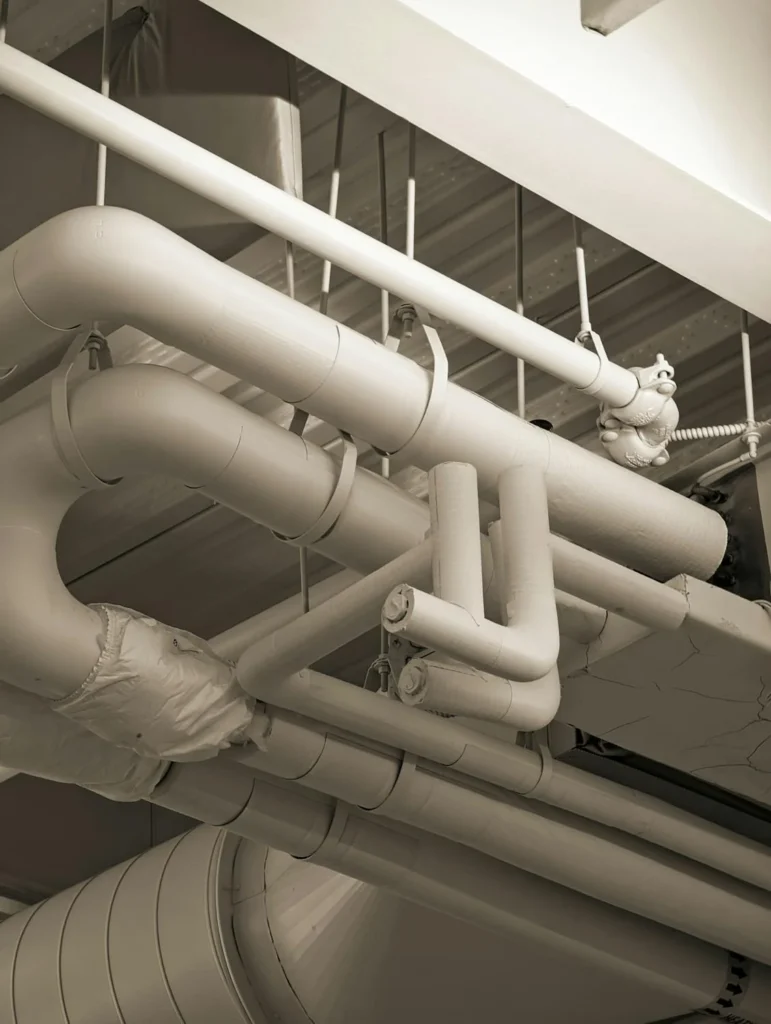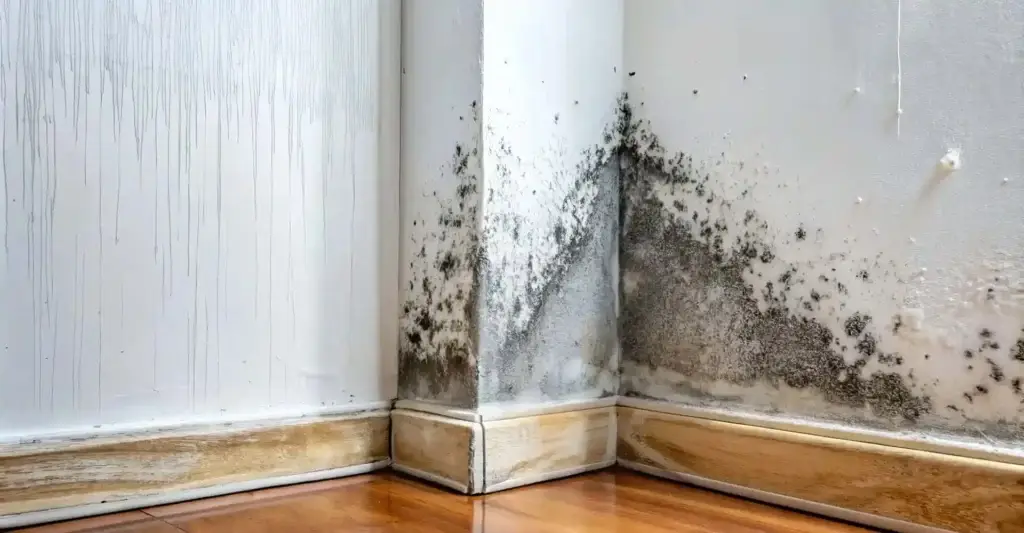Quick answer
If your UK property has flooded, take immediate, decisive action to minimise damage and ensure safety. First, prioritise safety: turn off utilities (gas, electricity, water) if safe, and avoid direct contact with floodwater due to contamination and hidden hazards. Next, contact your insurance provider immediately and document all damage extensively with photos and videos before any major clean-up. Begin the drying and cleaning process rapidly by removing standing water, ventilating, and using dehumidifiers to prevent mould growth. For significant or contaminated flooding (black water), professional flood damage restoration services are essential for thorough clean-up, sanitisation, and drying, ensuring safe and effective recovery and helping with future flood prevention.
UK property flooding
Flooding is one of the most distressing events a homeowner or business can experience. In the UK, flooding affects thousands of properties every year, causing devastating flood damage and disruption. According to the Environment Agency, over 5 million properties in England alone are at risk of flooding. With climate change leading to more extreme weather events, the risk is only increasing.
When faced with a flood, panic can set in, leading to rushed decisions that might cause further harm. Knowing what to do in the critical moments after a flood can help protect your property, speed up recovery, and most importantly, keep you safe. Here are the top five things you should do if your property has been affected by flooding.
1. Ensure Safety First
Before anything else, prioritise the safety of yourself and anyone else in the property. Floodwaters can be dangerous, bringing health hazards and hidden risks. Follow these essential safety steps:
- Avoid floodwater where possible – It may be contaminated with sewage, chemicals, or hidden debris.
- Turn off gas, electricity, and water – If it is safe to do so, switch off your utilities to prevent electrical hazards or gas leaks.
- Wear protective gear – If you need to enter the property, wear waterproof boots, gloves, and a mask to protect yourself from contaminants.
- Check structural damage – If the flood has been severe, there could be structural damage that makes the building unsafe. If in doubt, seek professional advice before entering.
If water levels are still rising, evacuate immediately and call emergency services if necessary.
2. Assess the Damage and Document Everything
Once it is safe to do so, assess the extent of the damage to your property. This will be essential for insurance claims and professional clean-up efforts.
- Take detailed photos and videos – Capture images of the flood damage in every room, including furniture, walls, floors, and any personal belongings.
- Make a list of damaged items – This will help with insurance claims and loss assessments.
- Check for structural issues – Look for cracks, warping, or weakened foundations that might require specialist attention.
By documenting everything thoroughly, you’ll make the insurance claims process smoother and faster.
3. Contact Your Insurance Provider
Many UK homeowners and businesses have flood insurance as part of their home or commercial property policies. Acting quickly can help you get the support you need sooner.
- Call your insurer as soon as possible – Most providers have a 24-hour claims helpline. They will guide you on the next steps and may send an assessor to inspect the damage.
- Don’t start major clean-up before contacting them – Your insurer may require an inspection before repairs begin.
- Ask about emergency accommodation – If your home is uninhabitable, your insurance may cover temporary housing costs.
Keep all receipts for emergency expenses, as these may be reimbursed by your insurer.
4. Start the Drying and Cleaning Process
Time is critical when dealing with flood damage, as standing water can lead to mould growth and further structural deterioration. The faster you act, the better your chances of salvaging your property.
- Determine the type of floodwater – The type of water will determine how you handle clean-up:
- White water – Clean water from burst pipes or taps. It is safe to handle but still needs to be removed quickly.
- Grey water – Wastewater from appliances, showers, or sinks. It may contain bacteria and should be handled with caution.
- Black water – The most dangerous type, containing raw sewage and hazardous contaminants. Avoid contact and seek professional help.
- Pump out standing water – If water levels are high, a professional flood damage company can use industrial pumps to remove it safely.
- Ventilate the property – Open windows and doors (if safe to do so) to speed up drying.
- Use dehumidifiers and fans – These will help reduce moisture and prevent mould.
- Dispose of contaminated items – Anything that has come into contact with sewage or black water should be disposed of safely.
Professional flood damage restoration services in the UK can help with drying, sanitising, and repairing affected areas efficiently.
5. Prevent Future Flood Damage
Once the immediate crisis has been handled, it’s time to think about long-term flood prevention. With flooding becoming more common in the UK, taking preventive measures can save you from future heartache.
- Install flood defences – Consider flood barriers, air brick covers, and non-return valves on drains.
- Raise electrical sockets and appliances – If you live in a flood-prone area, raising sockets and keeping important electrical items on higher ground can reduce damage.
- Improve drainage – Ensure your gutters and drains are clear to reduce surface water build-up.
- Check your insurance policy – Make sure you have adequate flood coverage and understand what is included.
- Sign up for flood alerts – The Environment Agency and Met Office provide flood warnings to help you prepare in advance.
There are also government grants available for flood resilience measures in certain areas. If your property is at high risk, check whether you qualify for funding to install flood prevention systems.
In summary
Recovering from a flood can be overwhelming, but taking the right steps quickly can make all the difference. Ensuring safety, documenting damage, contacting your insurer, drying out your property, and investing in flood defences will help you get back on track faster.
If you need expert help, professional flood restoration services are available 24/7 to assist with cleanup, drying, and repairs. By acting swiftly and decisively, you can protect your home, your health, and your future from the devastating effects of flooding.
Floods can be catastrophic, but preparation and fast action are key to reducing damage and recovering efficiently. Don’t wait until disaster strikes, take proactive steps to safeguard your property against future flooding events. By staying informed and prepared, you can lessen the impact of flooding and ensure a quicker return to normality.
Flood damage in UK property: Frequently asked questions
What are the most important safety precautions to take immediately after a property flood in the UK?
The most important safety precautions to take immediately after a property flood in the UK involve prioritising personal well-being. Do not enter floodwater due to potential contamination and hidden debris. Crucially, turn off your electricity, gas, and water supply at the mains if it’s safe to do so, to prevent electrocution or gas leaks. Always wear protective gear like waterproof boots, gloves, and a mask if you must enter the affected area. Check for any structural damage and evacuate if water levels are rising or if advised by emergency services.
Why is it crucial to document flood damage thoroughly for an insurance claim in the UK?
It is crucial to document flood damage thoroughly for an insurance claim in the UK because comprehensive evidence streamlines the claims process and helps ensure you receive fair compensation. Take detailed photos and videos of every affected area, including the waterline, and all damaged items before any major clean-up begins. Create an exhaustive inventory of damaged possessions, noting their condition and estimated value. This documentation provides your insurer with undeniable proof of loss and prevents disputes regarding the extent of damage, which is vital for a successful claim.
What is the fastest way to start drying and cleaning a flooded property in the UK?
The fastest way to start drying and cleaning a flooded property in the UK is to act immediately. First, remove all standing water using pumps, wet vacuums, or buckets. Then, maximise ventilation by opening windows and doors (if safe) and deploying commercial-grade fans and dehumidifiers to rapidly extract moisture from the air and materials. Remove all soaked porous items like carpets, underlay, and upholstered furniture as they are often unsalvageable and hinder drying. For extensive or contaminated flooding (e.g., sewage), contact professional flood restoration services for efficient and safe drying, disinfection, and repair.
How quickly can mould grow after a flood in a UK property, and how do you prevent it?
Mould can begin to grow after a flood in a UK property in as little as 24 to 48 hours if moisture is not thoroughly removed. To prevent mould growth, it’s critical to dry out the affected area completely and quickly. This involves ventilating, using dehumidifiers, and ensuring all surfaces are not just dry but also disinfected with appropriate anti-microbial cleaners. Porous materials that cannot be fully dried and disinfected should be promptly and safely disposed of. Maintaining good air circulation and monitoring humidity levels post-cleanup are also essential preventative steps.
What steps should I take to prevent future flood damage to my UK property?
To prevent future flood damage to your UK property, consider several proactive steps. These include installing flood defence products like flood barriers for doorways and airbrick covers, or non-return valves in drains. Improve drainage around your property by regularly clearing gutters, downspouts, and ensuring external ground slopes away from your foundations. Consider raising electrical sockets and appliances in flood-prone areas. Regularly inspect and maintain your plumbing system for leaks, and consider a sump pump with a battery backup for basements. Finally, sign up for local flood alerts and ensure your insurance policy has adequate flood cover.
Will my UK home insurance cover property flood damage, and when should I contact them?
Most UK home insurance policies include flood damage cover as standard for “escape of water” (e.g., burst pipes). However, coverage for external flooding from rivers, surface water, or coastal events often requires a specific “flood cover” endorsement or a higher level of policy. It is essential to contact your insurance provider immediately (most have 24/7 helplines) once your property has flooded. Do so before you begin major clean-up, as they will advise on next steps, arrange for a loss adjuster, and discuss potential emergency accommodation or professional restoration services.
When should I call professional flood restoration services in the UK after my property floods?
You should call professional flood restoration services in the UK as soon as possible after your property floods, especially if the water is deep, contaminated (e.g., sewage), or if the damage is extensive. Professionals have the specialised equipment (powerful pumps, industrial dehumidifiers, air scrubbers) and expertise to safely and effectively extract water, thoroughly dry the property, disinfect affected areas, prevent mould growth, and assess hidden damage. Their rapid response minimises secondary damage, ensures proper disposal of hazardous waste, and can often expedite your insurance claim process, leading to a quicker and more complete recovery.

Murat Kunacav - Technical Account Manager
Murat has a rich blend of over 15 years of experience from both the insurance and restoration industries, including a Bachelor's degree in Business Management. Since joining Ideal Response in 2020, Murat has become a specialist in technical scoping and managing major and complex loss restoration projects. With a focus on high-net-worth client management and intricate insurance-led restoration, he excels at collaborating across all parties, insurers, loss adjusters, contractors, and clients, to ensure seamless, end-to-end project delivery. Murat believes that the power of technical expertise lies in building strong relationships and delivering compliant results, no matter the scale or complexity.





















